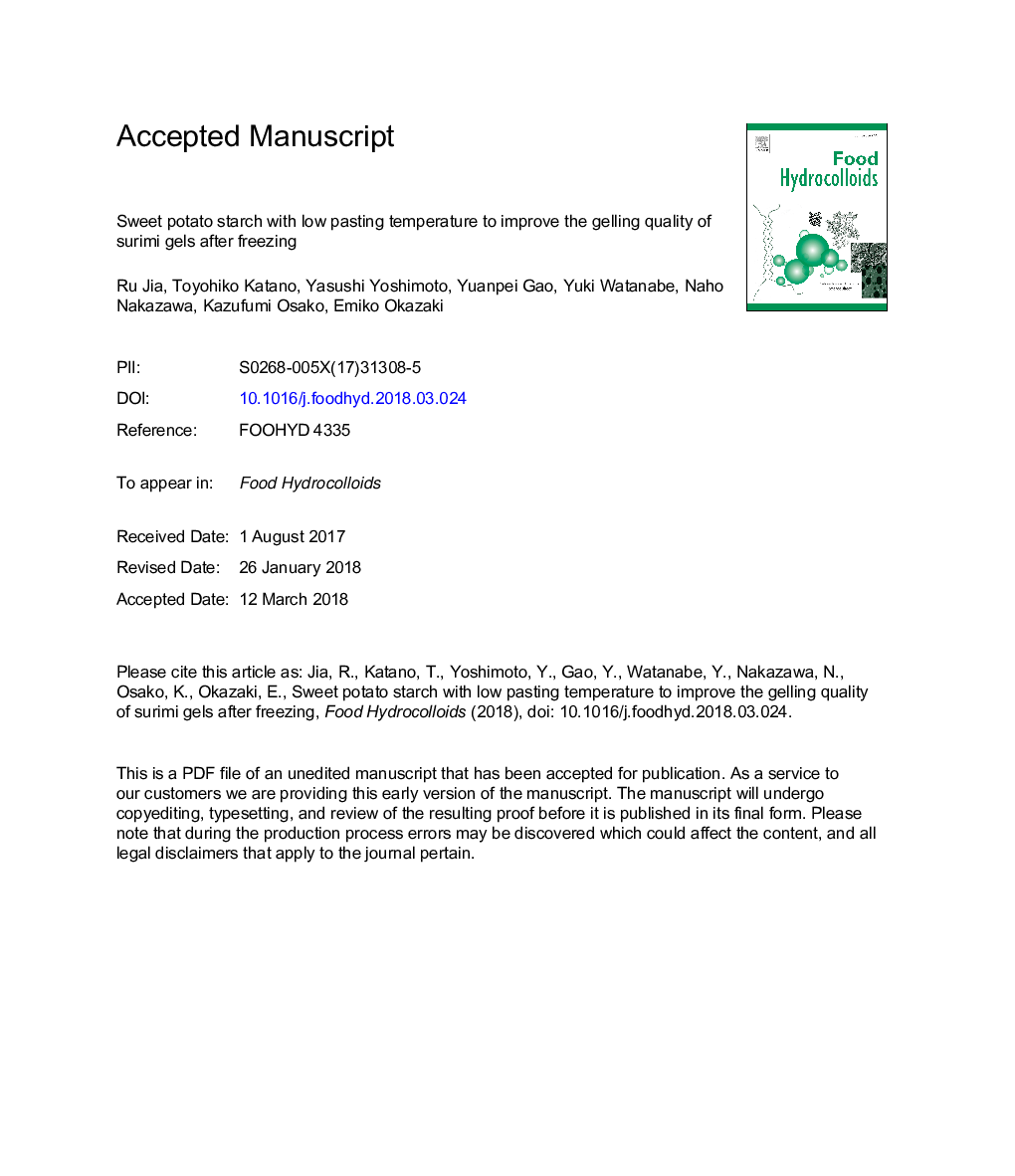| Article ID | Journal | Published Year | Pages | File Type |
|---|---|---|---|---|
| 6985889 | Food Hydrocolloids | 2018 | 25 Pages |
Abstract
The effects of native sweet potato starch (NS) and native sweet potato starch with low pasting temperature and slow retrogradation tendency (NSL) on quality changes of heated surimi gels after freezing and thawing were evaluated and compared. Starch-surimi gels were frozen by quick or slow freezing and were stored at â20â¯Â°C for 4 weeks. Gelling quality was determined by microstructure, drip loss, and texture profile analysis. The results showed that ice crystal size after freezing and void size after thawing were larger in NS-surimi gels than in NSL-surimi gels, and NSL-surimi gels showed less structural damage after thawing. Higher drip loss was observed with NS-surimi gels after freezing, although the expressible drip before freezing was nearly the same in both types of surimi gels. As for the texture profile analysis, NSL-surimi gels showed no increase in hardness and a lower decrease in adhesiveness than NS-surimi gels. Moreover, freezing rate also affected changes in gelling quality. Compared with slow freezing, quick freezing led to the formation of smaller ice crystals, which allowed starch granules to maintain their original globular shape, resulting in a minor change in gelling quality. Our results indicated that addition of NSL could improve the gelling quality of surimi gels after freezing.
Related Topics
Physical Sciences and Engineering
Chemical Engineering
Colloid and Surface Chemistry
Authors
Ru Jia, Toyohiko Katano, Yasushi Yoshimoto, Yuanpei Gao, Yuki Watanabe, Naho Nakazawa, Kazufumi Osako, Emiko Okazaki,
